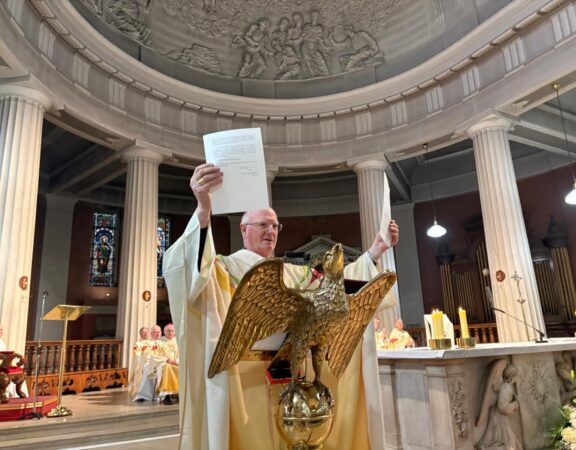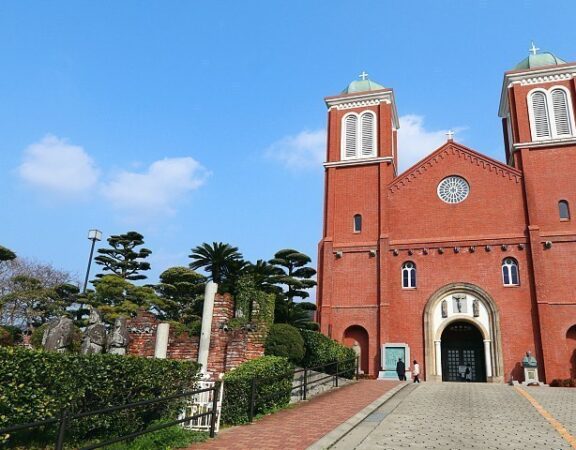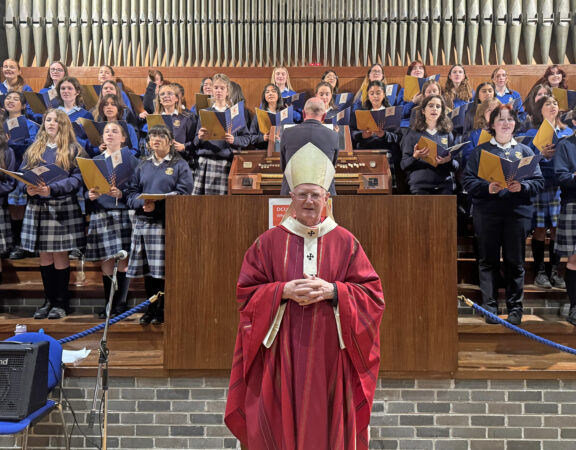SAINT JOSEPH’S SECONDARY SCHOOL, RUSH – 1961-2011
Homily Notes of
Most Rev. Diarmuid Martin
Archbishop of Dublin and Primate of Ireland
——————
Rush, 24th September 2011
Most Rev. Diarmuid Martin
Archbishop of Dublin and Primate of Ireland
——————
Rush, 24th September 2011
One of the things I like to do when I celebrate the anniversary of a school is to try to imagine what the world was like at the time the school was opened. I have often noted the expression of admiration that comes on pupil’s faces when I show my knowledge of history as I remind them of events of many decades ago. What they do not necessarily realise at the outset is that my information is not due to any extraordinary personal historical knowledge, but to my computer and to Google.
In the case of the anniversary we are celebrated this morning, I really do not need Google as I remember 1961 well as the year in which I began my final year in secondary school and as I began to reflect on the decisions I would have to take shortly about my life and my future.
At that time my interest was in becoming a broadcaster. In 1961 broadcasting in Ireland was at an important stage in its history. When your school opened its door, RTE television had not yet begun its transmissions; it opened on 31 December 1961. People often ask me what life was like without television; they ask what we did in the long evenings? I suppose the official answer was homework!
Television came and like many other changes in society it changed many things in our lives. As a teenager in 1961, I could never have imagined the change that would take place in the world in the years that would come. I could never have imagined the events I would encounter in my own life over those years.
We gather to celebrate 50 years of Saint Joseph Secondary School which was established in 1961 in a very different Rush. Rush was emerging from being a small Fingalian town, with its own traditions and with a local population which had roots and connections within a North County Dublin which had seen remarkable continuity in its history over the years.
Today Rush is a much larger, thriving, community still proud of its tradition but also experiencing enormous change Market gardening and the sea still play a vital place within the life of the community. But small market gardening has given way to large and significant agri-business. Families of different backgrounds have found their home in Rush, some from other parts of Dublin, others from overseas. The school roll contains children of 25 nationalities all of whom feel very much part of this school and this community. From a list of 13 original girls in the year of its opening, Saint Joseph’s had grown to be a school community of almost 600 young men and women today.
The original inspiration of the school is linked with the tradition of the Sisters of Mercy. The school today clearly affirms its Catholic identity. It shows its Catholic identity not in a closed sectarian spirit, but in one which is welcoming of the diverse backgrounds of children, respecting their own cultural and religious identity, yet all feeling themselves citizens of Rush, of Dublin country and of Ireland.
Catherine McCauley the foundress of the Sisters of Mercy was an extraordinary woman. Originally it was never her intention to form a religious community. She and her companions wanted to work in Dublin where poverty was rampant as group of lay women who would go out to assist the poor but above all to ensure that poor girls would have the opportunity to not just, as we sometimes say “to receive education” but to become educated. What do I mean?
The purpose of education is to enable young people to identify and realise their God-given talents and potential and to place those individual talents then at the service of a common vision for the future. The child is at the centre of education. Each child is different. The teacher does not decide what talents a child has; the teacher tries to help children to identify their own talents and helps them to develop those talents. The teacher not only imparts knowledge and information; the teacher challenges the child to think, to ask questions, to try to understand, to take responsibility.
Today on this anniversary we naturally look back over these 50 years. We think of the changes that have taken place in the school, in its buildings, in its facilities, in its spirit and tradition. We think of the contribution of all those who made Saint Joseph what it is: teachers, parents, boards of management, the parish community and of course the pupils, past and present.
But an anniversary is also a moment in which we should look forward. We look forward in the first place because we see in the pupils – boys and girls – symbols of hope for the future of Rush and of our wider society. Education is not just about fostering the ability of young people to be creative and to be fulfilled for themselves. It is about enabling people to bring their contribution to society.
We can apply the words of the first reading of our Mass to the boys and girls of this school as the face their responsibilities for their own future: “do not say I am a child…; Go now to those to whom I send you; do not be afraid, for I am with you to protect you”.
Boys and girls we are all living in difficult times. All of us share in the economic challenges that our country and our world have to face. But we are also living at a great moment in which it is great to be your age. It is a moment of history in which the pupils of Saint Joseph’s face challenges but also encounter opportunity which is in its own way unprecedented.
We are not at the best moment in our economy to do exactly what we would like. But this does not mean that we do not reflect; that we do not even dream about where we should be going in the future. When we give up dreaming our vision becomes stultified and we can easily just throw the towel in and be satisfied with what is second best. My message to the pupils of Saint Joseph’s is to be ambitious, to try to realise yourselves and to bring a contribution to a better future.
Young people have a greater sensitivity and aspiration regarding a better future. As Christians we believe, with our first reading, that God is with us and will accompany us as we begin our life’s journey. Our God, however, is a God who is love who releases in us not just talents of knowledge and expertise, but also human talents and gifts which enable us to be loving people and who wish to build community founded on love and care.
Catherine McCauley was a woman who set out to do simple good things with determination. With limited resources she set out to improve the world in which she lived and especially to improve the conditions of the less privileged. This afternoon I will celebrate 150 years of the Mater Hospital in Dublin, a dream of Catherine McCauley. That hospital set out from humble beginnings and has today become a worldwide name for medical expertise and excellence.
Catherine’s faith in God helped her to attain success which on her own she would never have attained. She left a legacy which is not just in bricks and mortar not just in institutions like the Mater Hospital or this school. Her legacy is embedded in people who face life with creativity and with courage.
As I said at the beginning of the words, 50 years ago, in 1961, I was in my final year of secondary school reflecting on how I should address my future My thoughts at this anniversary celebration go especially to the current pupils of Saint Joseph’s. We pray that God will guide them and protect them as they prepare for their future; that they will develop their talents and that their talents will be recognised; that they will bring a contribution of goodness to our world.
We invoke God’s blessing on them and hope that they will look back on their years in Saint Joseph’s as among the truly formative years of the lives. And we pray for the entire school community that what has been achieved in these fifty years will continue to grow and flourish in the years to come.







